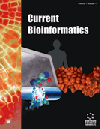
Full text loading...
We use cookies to track usage and preferences.I Understand

The MTA gene encodes a core component of m6A methyltransferase complex, which plays a crucial role in the post-transcriptional modification of RNA that influences many vital processes in plants. However, due to the constraint of embryonic lethality in MTA knockout mutation, the molecular function of MTA gene has yet to be comprehensively investigated.
The aim of this study is to investigate the expression and regulation of MTA in Arabidopsis.
A large-scale transcriptome and genome analysis were carried out for the expression and nsSNP (non-synonymous Single Nucleotide Polymorphism) studies. Structured-based virtual screening, molecular dynamics simulation, binding free energy calculation and m6A modification level assay were employed to mine and validate MTA regulators from COCONUT natural product database.
Tissue-specific expression and stress-responsive expression patterns of MTA were observed in Arabidopsis. nsSNPs from the 1,001 Arabidopsis project were not detected in the binding site of the methyl-donor substrate S-adenosylmethionine (SAM) in MTA. 10 small molecules were identified as potential regulators, among which CNP0251613 (adenosine diphosphate glucose, ADPG) was selected and validated to decrease m6A levels at 10µM vs. the control in Arabidopsis.
Our results provide a new insight and chemical entity into the in-depth study of RNA m6A writer MTA in plants.

Article metrics loading...

Full text loading...
References


Data & Media loading...
Supplements